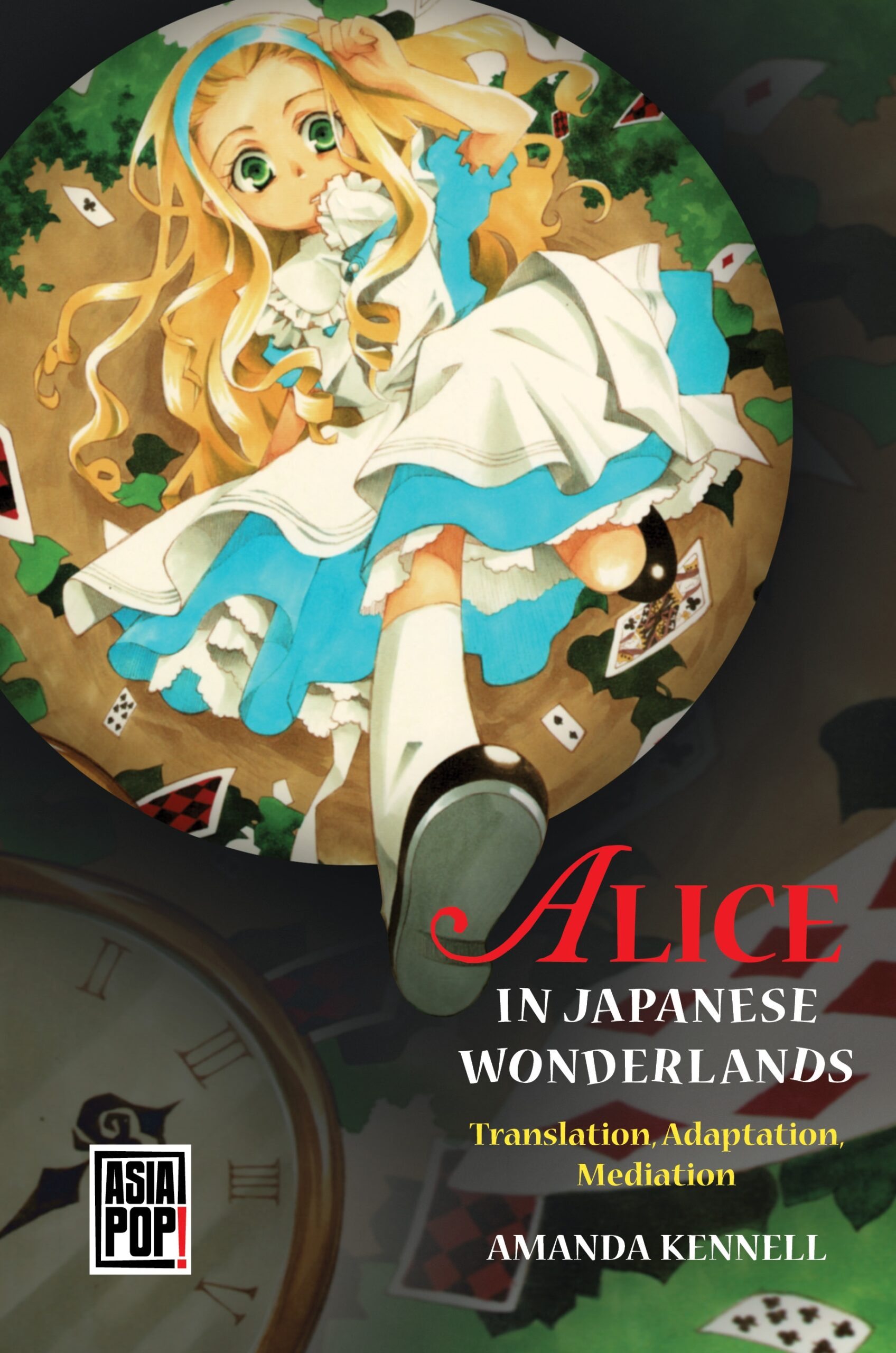Alice in Japanese Wonderlands: Translation, Adaptation, Mediation
- About the Book
-
Since the first translations of Lewis Carroll’s Alice books appeared in Japan in 1899, Alice has found her way into nearly every facet of Japanese life and popular culture. The books have been translated into Japanese more than 500 times, resulting in more editions of these works in Japanese than any other language except English. Generations of Japanese children learned English from textbooks containing Alice excerpts. Japan’s internationally famous fashion vogue, Lolita, merges Alice with French Rococo style. In Japan Alice is everywhere—in manga, literature, fine art, live-action film and television shows, anime, video games, clothing, restaurants, and household goods consumed by people of all ages and genders. In Alice in Japanese Wonderlands, Amanda Kennell traverses the breadth of Alice’s Japanese media environment, starting in 1899 and continuing through 60s psychedelia and 70s intellectual fads to the present, showing how a set of nineteenth-century British children’s books became a vital element in Japanese popular culture.
Using Japan’s myriad adaptations to investigate how this modern media landscape developed, Kennell reveals how Alice connects different fields of cultural production and builds cohesion out of otherwise disparate media, artists, and consumers. The first sustained examination of Japanese Alice adaptations, her work probes the meaning of Alice in Wonderland as it was adapted by a cast of characters that includes the “father of the Japanese short story,” Ryūnosuke Akutagawa; the renowned pop artist Yayoi Kusama; and the best-selling manga collective CLAMP. While some may deride adaptive activities as mere copying, the form Alice takes in Japan today clearly reflects domestic considerations and creativity, not the desire to imitate. By engaging with studies of adaptation, literature, film, media, and popular culture, Kennell uses Japan’s proliferation of Alices to explore both Alice and the Japanese media environment.
- About the Author(s)
-
Amanda Kennell, Author
Amanda Kennell is assistant professor of East Asian languages and cultures at the University of Notre Dame.Allison Alexy, Series Editor
Allison Alexy is assistant professor in the Department of Women’s Studies and the Department of Asian Languages and Cultures at the University of Michigan.
- Reviews and Endorsements
-
- Alice in Japanese Wonderlands is truly impressive, providing a wonderfully comprehensive survey of Japanese translations of Lewis Carroll and of Alice-inspired creative works. Amanda Kennell makes a significant contribution to our understanding of how literary works leap their national boundaries and travel around the world.
—Judith Pascoe, author of On the Bullet Train with Emily Brontë: Wuthering Heights in Japan - This unique book fundamentally recasts the concept of adaptation from literary studies to account for how Alice permeates cultural production in Japan in distinct ways that require close critical attention. It offers a truly original and insightful journey through this process, showing how Alice is the key to unlocking critical texts, artists’ works, and cultural phenomena from manga through the mystery genre. Alice in Japanese Wonderlands is a riveting work that should be read by Alice fans everywhere!
—Marc Steinberg, author of Anime's Media Mix: Franchising Toys and Characters in Japan and The Platform Economy: How Japan Transformed the Consumer Internet - The rise of postmodern pop culture in 1980s Japan—centered around what is called the new tribe of “Otaku” (nerd or couch potato) who loved reading science fiction, fantasy, and boy-meets-girl narratives—disclosed their deep and strong preference for the prepubescent figure of Lolita as originally created by Vladimir Nabokov in his 1955 novel. Amanda Kennell has brilliantly elucidated the figure of Alice, characterized by Lewis Carroll, as hidden deep within what the Japanese Otaku had long believed to be the portrait of Lolita. Without the transchronological impact of Alice, today’s Japan could not have enjoyed the global popularity of its manga, anime, and cosplay. This book convinces us of how Alice transgressed the boundary between the East and the West and revolutionized contemporary culture of the planet.
—Takayuki Tatsumi, author of Full Metal Apache: Transactions Between Cyberpunk Japan and Avant-Pop America - Amanda Kennell’s brilliant return to Wonderland represents not only an another trip down the rabbit hole, but the discovery of entirely new Wonderlands in Japanese literature, games, anime, and many other cultural artifacts. This virtual Wonderland expands and reorients this most famous of other places at the thresholds of sense and nonsense. Kennell’s erudition, creativity, and rigor make this journey both breathtaking and uncanny.
—Akira Mizuta Lippit, School of Cinematic Arts, University of Southern California - Alice in Japanese Wonderlands: Translation, Adaptation, Mediation is a fascinating and unique addition to Carroll scholarship. (The index alone should inspire other scholars.) After reading it, no one will see Alice in quite the same way again. It reproduces the Wonderland experience, in that the reader enters another world. Kennell is an excellent writer, with a relaxed, accessible style that any Carrollian would enjoy.
—Cindy Watter, The Knight Letter
- Alice in Japanese Wonderlands is truly impressive, providing a wonderfully comprehensive survey of Japanese translations of Lewis Carroll and of Alice-inspired creative works. Amanda Kennell makes a significant contribution to our understanding of how literary works leap their national boundaries and travel around the world.





